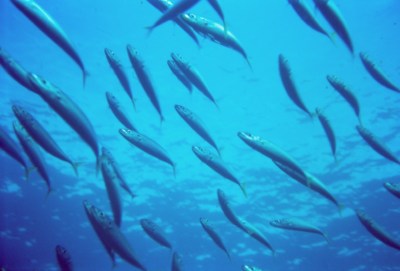
 Share This Page
Share This Page| Home | | Articles | | Symmetry | |  |  Share This Page Share This Page |
A deceptively simple idea we all need to understand.
— P. Lutus — Message Page — Copyright © 2008, P. Lutus(double-click any word to see its definition)

I recently read an article that summarizes psychologists' thinking about symbiosis (mutually beneficial relations between individuals or species), and as usual, they got their facts wrong — very wrong. The article says:
Social exchange — also known in biology as reciprocal altruism, reciprocation, or tit-for-tat — is an ancient, pervasive, and central part of human social life. This mutual provisioning of benefits, each conditional on the others’ compliance, is rare in the animal kingdom.
In point of fact, that is false — symbiosis is very common in both plants and animals. Having misstated his premise, the author goes on to compound his error:
Social exchange cannot be generated by a simple general learning mechanism, such as classical or operant conditioning. All organsisms [sic] can be classically and operantly conditioned, yet few engage in exchange. That strongly suggests that engaging in social exchange requires specific cognitive machinery, which some species have and others lack.
This quotation includes three statements, all of them fundamentally wrong. Social exchange can be, and is, learned among animals, can arise by way of instinct, but it can also arise through natural selection. It takes place among even the most primitive creatures (lichens, a symbiotic relationship between fungi and algae), and it does not require "specific cognitive machinery" unless lichens have a deceptively rich internal life.
But I'm not here to pick on psychologists — that's too easy and isn't very interesting. I am here to show that symbiosis, coöperation for mutual advantage, is not merely a bedtime just-so story, it is no less than a survival strategy — adopted by desperate, ruthless organisms (or brought into being by way of natural selection) as a fitness advantage.

The environment is rich with examples of symbiosis, from the most primitive organisms to the "highest" forms of life. And I ask my readers to remember that nature doesn't waste anything — if a behavior appears and successfully competes, it must have survival value.
Intriguingly, even in the virtual worlds inside computers, in organized competitions between survival strategies designed by game theorists, a very simple game plan called "benevolent tit-for-tat," a model for successful biological symbiosis, turns out to prevail over much more complex game plans.
The premise of this article is that plants and animals practice what I call the Symmetry Principle, not because of an abstract philosophical position, but because it maximizes their survival fitness. And, contrary to what psychologists appear to believe, it requires a peculiar mental twistedness to want to avoid interactions based on symmetry. In other words, it is people who avoid the practice of symmetry who possess "specific cognitive machinery," and they would do well to seek treatment for clinical narcissism.
Contrary to first impressions, symmetry doesn't favor a particular political outlook. Initially it seems to support the outlook of liberals, who would identify coöperation in nature as vindication for their views. But to an equal degree it favors a conservative political outlook, because symmetry, like natural selection, is a bottom-up game plan — it works at the lowest imaginable level (even of single-celled creatures) and doesn't require any sophisticated cognitive machinery, higher reasoning powers or centralized authority. Indeed, it can be argued that modern government (like modern religion) contradicts the Symmetry Principle by not conferring any advantage to the flock.
The psychologist quoted above appears to believe reciprocal altruism (symmetry using different words) can only arise among thinking creatures by way of bargaining and explicit mutual consent, between creatures possessed of sophisticated reasoning abilities. The argument he offers for this theory is that symmetry is only rarely seen among animals, those poor lower creatures unable to shake their fists and argue. Well, first, there is no scientific evidence for pure altruism, but plenty for coöperation with an expectation of reciprocity. Second, all a psychologist would need to do is sit down in a grassy field on a summer day — or, equally effective, study biology — to discover how common symmetry actually is in nature (the reason they don't do this is because, for reasons explained here, psychologists aren't scientists).

Symmetry is common in nature because it works. Although symmetry doesn't support any particular political viewpoint, it does contradict the religious argument that acts of self-sacrifice stand as evidence for a supreme being. Occam's razor (the idea that the simplest explanation is likely to be the correct one) suggests that acts of apparent self-sacrifice or pure altruism are the first move in a negotiation between parties, and the other parties are expected to reciprocate.
Because someone will surely argue that the case of a person killed while trying to save a stranger contradicts an expectation of reciprocity, I will reply that symmetry, like natural selection, works only in a broad statistical sense, even as it fails in many individual cases. Because of the peculiar and counterintuitive mathematics of natural selection, a tiny fitness advantage can in time become a trait shared by an entire species.
Consider the example of the "bait ball," a close-packed school of fish. The bait ball is visible in the water for quite a distance, and this can only attract the attention of predators. Where is the survival advantage? Well, as it turns out, even though most of the fish may be eaten in a big attack by multiple predators, the strategy is superior to widely scattered fish swimming alone. Three survivors out of 10,000 fish beats no survivors at all. When I see a bait ball, I think, "Fish have been choosing this strategy for millions of years. It must work."
Or consider the example of the USS Indianapolis, a U.S. Navy vessel responsible for delivering the Hiroshima bomb to Tinian Island in 1945, and that was later attacked and sunk by a Japanese submarine. The crew were unable to summon help before the ship went down, and because of their top-secret mission, they were not recognized as overdue at their next port of call. Consequently, 880 men were thrown into warm, tropical, shark-infested waters, where they floated four days before rescue.

Over time the men in the water packed themselves close together, much like a school of fish, and an informal system of rotation came into being (men in the center were obliged to spend time at the perimeter). During this four-day ordeal, 563 men were eaten by sharks — only 317 of the original 880 men were rescued. This event was the worst single at-sea loss of life in the history of the U.S. Navy.
Doesn't this terrible result argue against the coöperative "bait-ball" strategy, and therefore against symmetry? Not at all. According to eyewitness accounts, sailors who expired from thirst, or who suffered mental breakdowns and swam away from the group, were quickly attacked and eaten, much more aggressively than if they had stayed in the group.
Natural selection is simultaneously brutal and easy to understand. If a strategy confers no survival advantage, the strategy dies along with the creature that practices it. But a strategy only needs to confer a small advantage to persist through time. Based on its ubiquity, one must conclude that the symmetry principle, a strategy of coöperation and reciprocation, confers a survival advantage.
Humans didn't invent the Symmetry Principle, we discovered it in nature. But not everyone has evolved to the same degree — there are twisted personalities that argue against symmetry, that try to shape a one-sided, parasitic relationship with other people and with the world. Such game plans always fail over time, but people who won't be honest with themselves sometimes spend years pretending not to notice the corrosive effects of all take and no give.
(To browse the pages of this article, click the arrows or use the drop-down lists at the top and bottom of each page.)
| Home | | Articles | | Symmetry | |  |  Share This Page Share This Page |